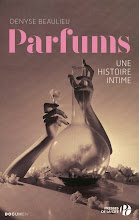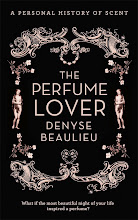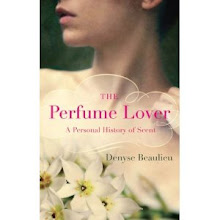All
of the Exclusives are named after some aspect of Coco Chanel’s story. Speaking
about Jersey, Jacques Polge explained
that the olfactory concept had come first: it was matched with a facet of the
Chanel saga later[i].
Were things done in the same order for Misia?
The PR team did say that for his first Chanel fragrance, Olivier Polge started
by seeking out an accord that had never been explored by the brand. Once he had
found it, the scent was christened after the woman who introduced Chanel to the
artistic avant-gardes of her time.
As
a muse, Misia Sert is almost too rich a source of inspiration: musing was her
raison d’être. Known in her heyday as “The Queen of Paris”, she was trained as
a pianist by the composer Gabriel Fauré, who considered her a prodigy, but
after getting married she played only for her friends, admirers and protégés –
i.e., most of the great writers, composers and painters from the Belle Époque
to the Jazz Age. Renoir, Vuillard, Vallotton, Bonnard and Toulouse-Lautrec painted
her; Marcel Proust based his Mme Verdurin on her. She inspired, nurtured or
sponsored Mallarmé, Cocteau, Ravel, Stravinsky, Picasso, Satie…
But
it is her patronage of the Ballets Russes, to which she introduced her friend
Gabrielle Chanel, which justifies the use of her name for the fragrance.
Olivier Polge states he had no intention of composing an olfactory portrait of the
lady: the scent is meant to evoke the heady blend rising from both the dress
circle and wings on the opening night of a Ballets Russes
production.
The
scent Polge the Younger decided to work on is built around the classic
violet/rose accord that came to be associated with lipstick in the early 20th
century. Introduced in fine fragrance by Coty’s 1904 La Rose Jacqueminot, its contemporary version was coined for Yves
Saint Laurent by Sophia Grojsman in Paris:
at this stage, it had already acquired its retro connotation, and stood for the
glamorous, old-school type of femininity YSL wanted to project (when you call
your fragrance “Paris”, you’re setting yourself up as an institution). Frédéric
Malle’s 2003 Lipstick Rose was the
first to use the accord ironically, between quote marks. Since then, it has
been featured as such in a number of scents such as Prada’s discontinued Rosetto or the more recent Guerlain French Kiss. When Nathalie Feisthauer
developed Putain des Palaces for État
Libre d’Orange[ii],
it was the “lipstick accord” she picked to evoke the “luxury hotel hooker” in
the Gainsbourg song that inspired the scent (given the brand and brief, the
result is predictably raunchier and rougher-edged than Misia).
It’s
interesting to note that when Olivier Polge came up with his own interpretation
of the lipstick accord, Chanel named it after a woman: a first for the
Exclusives. And what’s more, after a woman not
Coco: a first for the house. In perfumery, the lipstick accord may well
function as a metonymy of feminine artifice and seduction, those of the muse or
courtesan Gabrielle Chanel might have become, but didn’t.
Judging
from her pictures, Misia Sert’s ripe-peach beauty was better suited to Renoir
than to her friend’s petite robe noire.
Though her namesake fragrance is not meant as her portrait, it does reflect
some of that lushness. Misia is all
flushed cheeks and heated, powdered skin under swishing furs, with an undertow
of leather. The more you wear the fragrance, the more you feel that the lipstick
accord, bolstered by magisterial materials such as the rare Grasse rose grown
exclusively for Chanel, somehow burst through its quote marks to turn into a
stranger, richer blend. The violet, wine-dark. The rose, petals crushed with
raspberries. The balsamic base (tonka, benzoin), a sable-trimmed velvet wrap. Misia may well be the most erotic of all
Chanels, perhaps because it is a
scent that bears the name of another woman. It is also a masterful
reinterpretation of the lipstick accord, as reinvented by Sophia Grojsman (an
IFF perfumer, Olivier Polge’s alma mater), that manages to be both keenly
contemporary and almost archaic -- much like the Ballets Russes. In picking its new in-house perfumer, Chanel seems to have been right on the nose.
Misia will be commercially available
as of February 28th. You can already find it at www.chanel.com.
[i] In this particular case: the scent
focuses on lavender, which is historically an English fragrance note; hence,
“jersey”, since the knit fabric Coco Chanel made fashionable comes from the
Channel Islands.
[ii] The name comes from the lyrics of the
Gainsbourg song “Ronsard 58”, based on the 16th-century poem “When
you are old” by Pierre de Ronsard (for translations of both, click here)




_1895.jpg)




 L'actu
L'actu 

